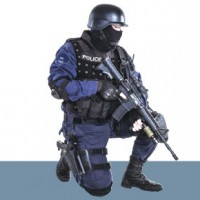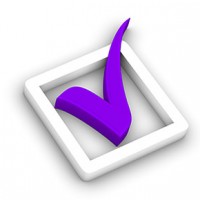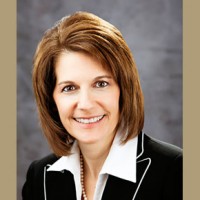
Anti-money laundering (AML) professionals have been pouring over the recent cases involving significant actions against financial institutions and money services businesses (MSBs) trying to decipher the intricacies of the core issues and weaknesses of various AML programs. The next activity is some level of corporate introspection to determine if "that could happen to us." The answer is "Yes, it can."
Somewhere in this process far too many people came to the uncomfortable realization that no one seems to have all the information necessary to make fully informed decisions or accurate appraisals. It is that realization that speaks to a core problem in almost every single case — there was a critical communication breakdown that led to poor decision making or loss of procedural control. The real tragedy in those cases is that often those communication breakdowns were often easy to eliminate or dramatically reduced.
Reading those cases, one or all of the following actions occurred: Somebody did not communicate (say/write) some key information, somebody was left out of the communications loop or somebody either did not understand, or chose to ignore the message. The majority of these situations were due to a failure of intercultural communications. This is not referring to communication involving different nations, ethnicities or languages. It means that cultures within an organization were not on the same page. Because of this business challenge, hundreds, if not thousands, of managerial and business consultants worldwide have very gainful employment. That is because when the first human business partnership was formed before recorded history, mid-management, marketing, sales and the C suite (or their Stone Age equivalent) all had different agendas and different approaches to achieve individual perceptions of success. Then along came the first compliance officer and things got even more challenging. Yet even then the problem was that there was that classic "failure to communicate."
Obviously there is no limit of available resources geared to solving these communication conundrums. Yet perhaps the best tool available to all of us is one that was available to our pre-historic forbearers — the working group. Let us be clear that this is not a committee or a team or any of the countless other conglomeration of business personnel that have deserved and undeserved reputations for ineffectiveness. After all the classic saying is that the platypus — duck billed, web-footed, beaver tailed, was an animal designed by a committee. The difference is that a working group in this context is there to share information, insight and solutions, not complete a project or invent a product or plan an event. Its sole purpose is to facilitate the free exchange of information and enable all relevant stakeholders to be exposed to what they need to know to make those decisions and assessments that were mentioned earlier.
A working group has certain required elements that determine the level of its success. These are the knowledgeable and committed members, a good method of operation about which everyone can agree and a willingness to share thoughts and data without the crippling information hoarding and political actions that are often the precursors to a compliance action and possible legal consequences.
The members of the working group are an important key to success. To be the most effective, members should represent a broad range of relevant stakeholders. Each organization is different and the composition and manageability of a working group needs to be determined on a case-by-case basis. The key is to ensure that all groups that have a direct impact on the compliance function are represented in some way. If it is too cumbersome to include all of your product managers, then perhaps some products groups can be combined in one group member. The important point is to make sure that the compliance group has all the input it needs to make viable, informed decisions and recommendations.
The members of the working group should be seasoned enough to know their work environment and how it fits into a compliance culture. They should also be active and respected members within their peer group so that the insight they bring to the group is truly indicative of the part of the organization they represent. Finally, they should be supportive of the compliance function. For example, an optimum working group in a large financial institution would consist of high level representatives from:
- Both AML and anti-fraud teams,
- Information Technology (IT) as so much compliance work relies on efficient, effective technology,
- Marketing/sales as it is the products and services of a company that are at the core of compliance issues,
- Legal department/general counsel because a clear, concise, accurate and timely legal opinion is a rare commodity, but so important in staying in compliance with the law
- Senior management and business group leaders who are participating as much to bring information back to his or her peers as providing insight on how company leaders will view a compliance decision or effort, and
- Middle management and/or frontline personnel who will often have to implement many of the AML and anti-fraud policies and procedures (Note: This group may not be a permanent member of the working group because of the level of discussions. However, they are invaluable when the group is exploring the implementation of certain compliance policies and procedures).
Successful operational attributes of a successful compliance working group include:
- Regular meetings that are as close to mandatory as possible,
- Organization that results in the effective use of the information shared within the meeting, and
- Good leadership that keeps the group relevant and effective.
Leadership is often an early sticking point as the group is often made up of leaders at various levels of an organization. An effective way to deal with that is to have a rotating chairperson of the group. That way all participants, or at least those willing to assume a leadership position, will have the opportunity to steer the discussion.
First and foremost the working group is a vehicle for the sharing of information and ideas. It is at its most useful when a member brings an initiative or a challenge up for discussion and the other members provide insight from the perspective of the stakeholder group they represent. This helps reduce one of the most frequent problems in a compliance environment and that is an uninformed decision. Even a cursory review of recent regulatory actions shows evidence of unilateral or isolated decisions that either directly or indirectly led to the reason for the action.
What is discussed in a working group is usually determined by the business and compliance environment in which the organization operates. While specific issues unique to the company are frequent topics, the group also needs to consider the bigger picture. That means discussions should also include topics such as:
- Recent postings on regulator web sites including:
- New regulations
- Advanced Notices of Proposed Rule Making (ANPRM)
- Comments
- Guidance
- Administrative Rulings
- News Releases
- Recent law enforcement prosecution cases and recent Department of Justice actions such as DPAs or guilty pleas to explore how funds were laundered
- Recent regulatory actions including state bank examiners especially those regulatory actions related to MSBs or MSB products (money remittances and money orders, etc.).
In addition, outside experts are very valuable to a working group's mission. Not only do they provide external viewpoints and insights but they also help keep the working groups agenda timely and interesting. For example invite law enforcement and other outside speakers to discuss current money laundering trends and techniques or perhaps a federal prosecutor to discuss certain aspects of past prosecution that could reveal internal issues that may require attention.
The core premise of a compliance working group is that communication is a two way street — develop relationships both internally and externally. Earning the trust and respect of your peers will enhance communications. For example, once a financial institution's senior staff becomes comfortable working with and communicating with the BSA/AML or anti-fraud team, they will reach out for assistance and advice. In many cases, the activities of a working group can encourage business units to contact compliance officers directly when they feel that they have detected potentially suspicious customer activity.
Given the internal politics, egos and hidden agendas that are present in almost any organization the creation, maintenance and effective output of a compliance working group might seem problematic. Here are a few tips for the various stakeholder participants in such a group that will likely help break down barriers and allow for the free-flow of information that is critical for success.
Compliance officers: When seeking to create a working group, build an effective business case for each stakeholder group. Frontline representatives, market people and top executives often do not share the same concerns or motivation. Be able to demonstrate how participating in such a group will benefit them and their peers, especially when developing the crucial tone from the top. Within the working group make sure you listen to the concerns of the other stakeholders. Yes, compliance is driven by the cold hand of the law, but your fellow group members have pressures of their own. Learn to make the most of the insight you glean to build not only an effective AML or anti-fraud program, but one that can be implemented with the least amount of pain.
IT representatives: Your world is very different than your group mates, yet the success of the organization relies on an effective partnership. You need to understand their requirements to do your job and the need to know what technology can and cannot do for them. Be prepared to break down language barriers that exist between management and technical people. Simplicity is the key.
Senior management: You may never have a better opportunity to see what is happening in your organization than participating in a compliance working group. Your role is primarily two-fold. One is to act as a problem solver and provide big picture insight that can support the compliance effort. The second is to use the knowledge and insight you gain from the compliance professionals to help your peers and the board of directors to establish the critical "tone from the top."
Earning the trust and respect of your peers will enhance communications
Mid-management and frontline representatives: You may feel a little out of place at first, but remember your input is critical to building a successful compliance environment. Often top management is not aware of the daily challenges of the outward facing personnel of the company. Your role is to educate them and to help your peers understand why some top level decisions are made concerning compliance policies and procedures. This is a time to share knowledge and solve problems, not take advantage of an opportunity to air grievances.
Legal counsel: Compliance is centered on fully understanding the intricacies and interpretations of laws and regulations. This requires clear opinions and clear recommendations. It also requires a very clear picture of the consequences of non-compliance. In a working group, it is critical that everyone can take back an accurate picture of the pitfalls of non-compliance to their peers. Your role in making that happen is critical.
Remember a compliance working group is just one tool at a compliance officer's disposal to communicate effectively. However, it is the most inclusive and can potentially be the most valuable if managed well. In the compliance arena, the companies that communicate well on the inside fare the best. The proof is often in the court records.
Ed Beemer, CAMS, APR, principal, CorpComm Solutions LLC/ComplianceComm, Arlington, Virginia, USA, efb@compliancecomm.com
Don Temple, principal, BSA/AML Consultants LLC, Fallston, MD, USA, donaldlt1@yahoo.com










